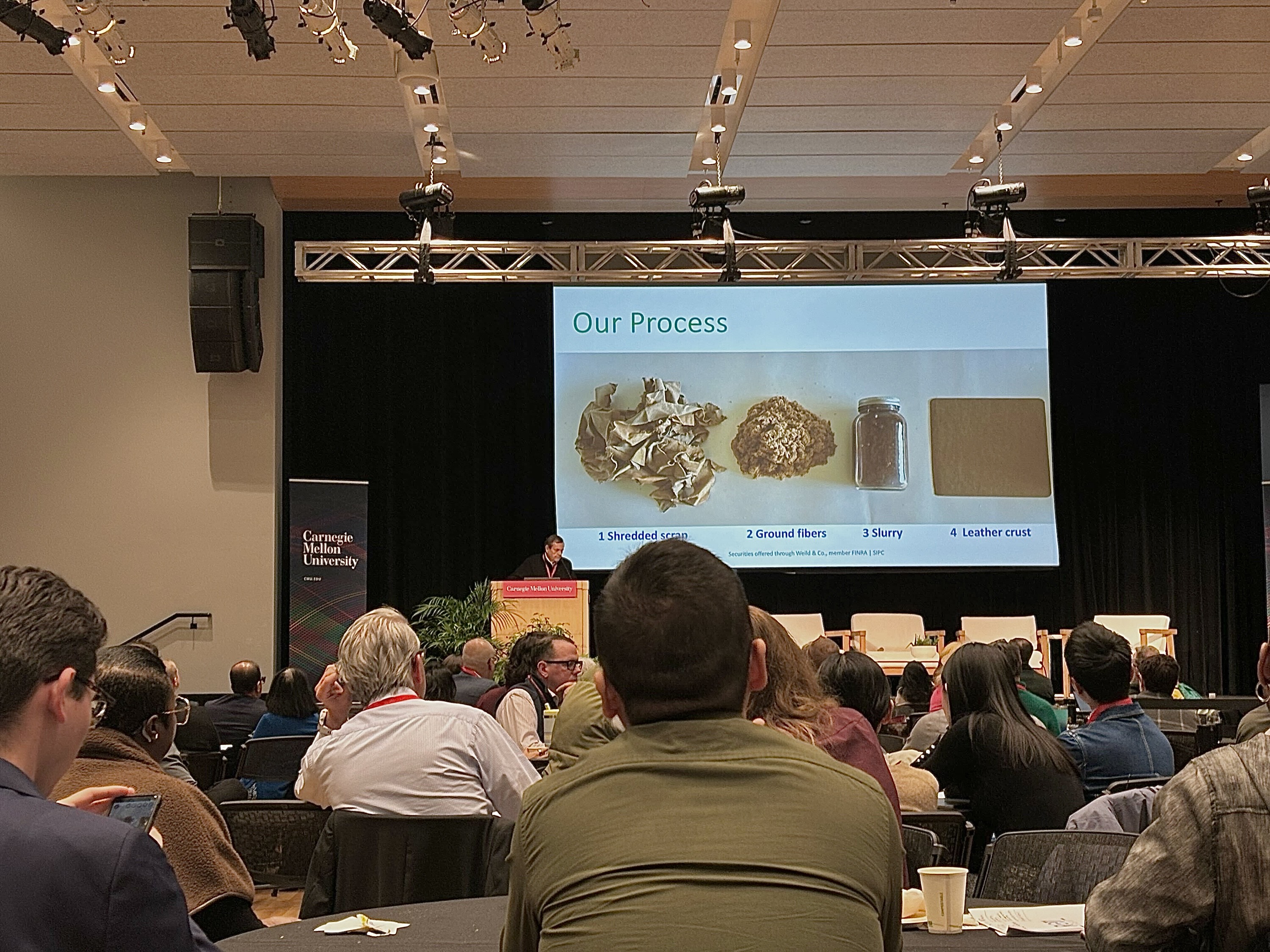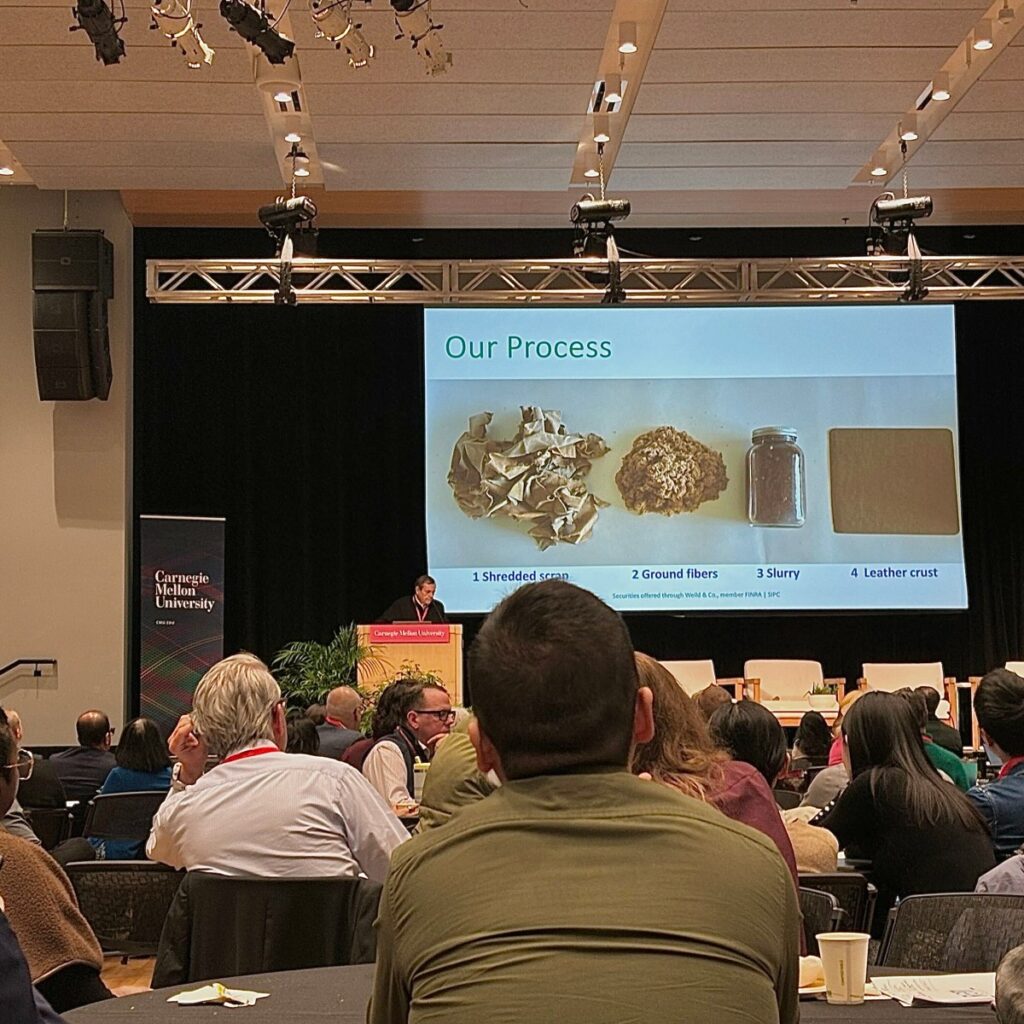
Every year, a collection of local politicians, startup leaders, government officials, and corporate executives gather at Carnegie Mellon for the Wilton E. Scott Institute’s Energy Week to discuss the future of the energy industry.
This year, the central topic of Energy Week was artificial intelligence, which, in addition to its expansive applications, has brought a new set of energy supply concerns. A series of keynote lectures, panel discussions, and “Shark Tank”-style pitch demonstrations illuminated potential answers to AI-related problems and questions about the energy sector as a whole.
March 25, titled the “Investor Day,” was centered on the startup showcases. Representatives from energy startups delivered short presentations in front of potential investors, who could ask questions and arrange one-on-one meetings with the representatives afterward.
The presenters ranged from seasoned startup veterans to dynamic young professionals, and their pitches were similarly varied.
Optimus Technologies, a Pittsburgh company founded in 2010, has deployed over 1,100 semi trucks featuring their decarbonized diesel engines and posts millions of dollars per year in annual revenue. J.P. Robotics, a robotics group focused on autonomous gas pipeline inspection and maintenance, has, so far, conducted only three field demonstrations but offers a regulation-driven answer to $6 billion of damages to pipelines per year.
One startup that drew substantial attention was Sustainable Composites, LLC. Citing that “50 percent of all leather produced is discarded” — because cows are not shaped the way leather products are — the method Sustainable Composites uses for repurposing scrap leather into new leather is in demand by “60 companies,” including Nike, the largest leather consumer in the world.
H Quest takes a two-pronged approach to the commercial issue of decarbonizing natural gas. The first is the obvious one — removing carbon emissions, which H Quest does with 40-foot systems employing a “pioneering” methane pyrolysis process that converts natural gas into hydrogen. Hydrogen can then be used as a clean energy source. The other side of the business model is the simultaneous production of carbon black, which offers a “very direct path to $2 billion in revenue,” according to the company pitch. As a byproduct of the natural gas processing, carbon black sells for $1.50 per kilogram, and each system can produce three tons of carbon black a day.
An energetic pitch came from Farm to Flame Energy CEO Kwaku Jyamfi, who marketed the company’s specialized biomass-based generator as a carbon-neutral replacement for diesel generators. Farm to Flame’s selling point is that, besides the environmentally friendly aspect of their generators, the generators are “cheaper than diesel by half” and “solar by two-thirds” in terms of price per kilowatt hour.
Farm to Flame, H Quest, and many of the other startups presenting mentioned some amount of funding sourced by a government agency. The Department of Energy and its sub-agency, the Advanced Research Projects Agency-Energy (ARPA-E), were most commonly cited as sponsors, alongside the Environmental Protection Agency and the National Science Foundation.
Day two, named “AI and Energy,” consisted of panel discussions and keynote talks. The theme of AI and energy was integrated into larger-scale examinations of how private and public policy can determine the relationship between the AI industry and the energy industry going forward.
The first afternoon keynote talk was delivered by Valerie Gaydos, who represents the 44th district of Pennsylvania in the state House of Representatives. Gaydos talked primarily about the importance of taking a careful approach to regulating newer technologies like AI.
Gaydos also said that implying clean energy sources like solar can easily replace existing CO2-emitting sources can be damaging, especially within the education system, and encouraged a “planned out” strategy for phasing out from natural gas and coal.
Sara Innamorato, current Allegheny County Executive, focused on the pressures of adapting to climate change and securing funding in today’s political climate. Innamorato said that by 2040, the City of Pittsburgh will have to spend an estimated “$520 million in adaptation costs,” which will go toward structures like retaining walls as the threat of landslides increases.
Receiving that funding may be difficult, said Innamorato, because of the “deep uncertainty … in D.C.” with respect to funding sources like the Bipartisan Infrastructure Law and the Inflation Reduction Act.
Later in the afternoon, a panel composed of Abby Smith, Brian Regli, Ramayya Krishnan, Holly Merriman, and Christophe Combemale took the stage to discuss how AI could impact the energy workforce. Smith said that there is “something about AI that doesn’t feel very people-centered,” and emphasized the need for “inclusive economic growth” to connect the technological improvements brought about by AI with societal growth.
Regli addressed the increased demand AI data centers place on energy infrastructure. Data centers, whose energy demands as an industry have tripled domestically over the past decade, are projected to take up 6.7–12 percent of all U.S. power consumption by 2028. Noting that Pennsylvania is a net exporter of energy, Regli said that Southwest Pennsylvania is a great place to attack the issue of powering data centers and highlighted the new regional Mainspring Energy generator factory as an example of the steps being taken toward a cleaner and more robust energy grid.


